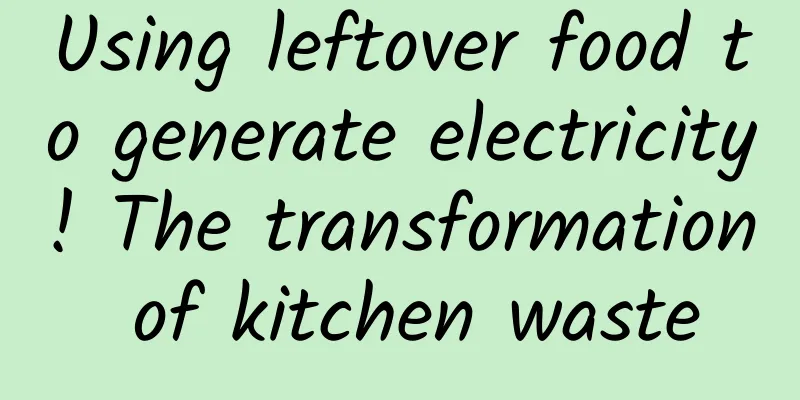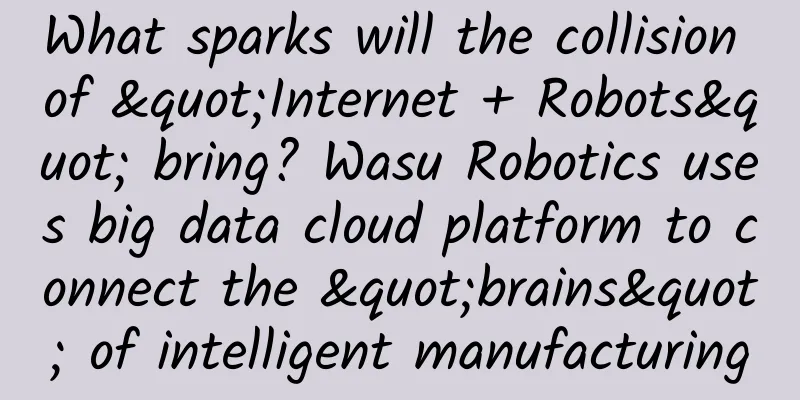Using leftover food to generate electricity! The transformation of kitchen waste

|
Author: Li Chuanfu Shi Xiangqi In today's world, with the growth of population and the acceleration of urbanization, garbage disposal has become a global problem. Among them, food waste is regarded as a potential energy treasure house due to its high organic content. British researchers have begun to build power plants that specialize in using food waste such as leftovers, opening up new ideas for waste-to-energy. The principle of food waste power generation is based on anaerobic digestion technology, which is a process of converting organic waste into energy. Food waste is transported to huge fermentation tanks, which are similar to rural biogas pits and are also called super "cow stomachs". In the fermentation tank, food waste is mixed with water to form a fluid. The microorganisms in the fermentation tank, mainly methane bacteria, devour the organic matter in the food waste and emit methane gas that can be burned, namely biogas. These methane gases have high calorific value and good flammability. They can be directly used for combustion power generation or transported to other factories as fuel gas. Food waste needs to be sterilized at high temperature before entering the fermentation tank to ensure the safety of microorganisms in the fermentation tank. During the fermentation process, some organic matter that cannot be digested by microorganisms is precipitated into sludge, which is rich in nutrients and can be used as organic fertilizer after harmless treatment. The UK has built the world's first fully enclosed food waste power plant, and it is expected that about 100 similar commercial waste treatment plants will be built in the future. These power plants will enable millions of British households to use electricity from food waste power plants. In addition, research in the United States has shown that the use of food waste and food processing waste streams in waste-to-energy technologies has increased, demonstrating the potential of treating food waste through anaerobic digestion technology. Food waste power generation can not only effectively reduce the environmental problems caused by landfill, but also reduce greenhouse gas emissions. According to research by Greenpeace, the most favorable order of operation for food waste treatment to reduce greenhouse gas emissions is to reduce food waste and food waste at the front end, and to classify and recycle waste at the same time. The environmental benefits obtained by this are far higher than choosing the appropriate back-end treatment method. As a treatment technology, anaerobic digestion is still a research hotspot worldwide because it has a simple pretreatment process, can produce a large amount of biogas for power generation, has a short treatment cycle, and can also produce additional products such as fertilizers. From the perspective of economic benefits, food waste power generation is also attractive. For example, a scientific study by Sichuan University showed that 1 ton of leftovers can be used to extract 80 to 120 kilograms of bio-coal, which has a higher calorific value than ordinary power coal and is close to standard coal. This means that the energy conversion of leftovers not only reduces the cost of waste treatment, but also creates economic value as a new type of energy. In the context of global sustainable development and energy transformation, food waste power generation technology has demonstrated its potential in reducing environmental pollution, lowering greenhouse gas emissions and providing renewable energy. With the continuous advancement and promotion of technology, more families will be able to use this green energy in the future, contributing to global sustainable development. China also plays an important role in the global energy transformation, actively promoting energy transformation, reducing carbon emissions and achieving sustainable development. The application of food waste power generation technology is an innovative practice in this transformation process. |
<<: If you collect all the farts from cows in a day, you can actually boil 20 liters of water?
Recommend
Tesla's global Internet outage paralyzed its cars, netizens: nothing new
Tesla’s Battery Day had just ended when tragedy s...
Rest of World: BYD will lead Tesla in ten markets by October 2024 with its low-priced models
Recently, Rest of World reported that BYD has gai...
Android App Market’s Spring Festival holiday arrangements, CPs please pay attention!
Many developers are concerned about the holiday a...
The next generation of search engines from the perspective of advertising logic
Case: A reader asked about a financial management...
Apple responds: iOS 16 paste pop-up must be fixed, or next week!
Apple has always focused on protecting user priva...
Honda Innovation Company to be established to focus on research in areas such as connected vehicles and the Internet of Things
According to foreign media reports, Honda Silicon...
8 ways Windows 10 will attract Mac OS X users
Not long ago, Microsoft executive Kevin Turner on...
How many creative ideas should I write for each promotion unit of Shenma SEM? Are 5 okay?
(1). Generally, 2-3 items are recommended. No nee...
Why do you want to shop again on Double 12? Beware of these 8 marketing psychology principles!
Animals may become aggressive when they see feath...
Why is the “Coolpad + LeTV Mobile Phone” combination facing a survival crisis?
A week ago, Coolpad quietly launched the Cool Pla...
Marketing strategy for June: Children’s Day, College Entrance Examination, and Dragon Boat Festival, how to leverage marketing opportunities?
There are many festivals and hot topics in June e...
Helicobacter pylori has these "effects"? Don't be complacent, you still have to treat it!
In 1982, Australian scientists Barry Marshall and...
What strange reactions will occur in the body before death? Can there really be a last moment of life?
Expert of this article: Zhang Yinming, PhD in For...
Cocos' new solution debuts at BesTV/ARM H5 Forum
On June 18, the BesTV/ARM HTML5 Technology Forum ...
Review of the ten major events in China's Internet development in 2015
Looking back at 2015, "Internet Plus", ...









